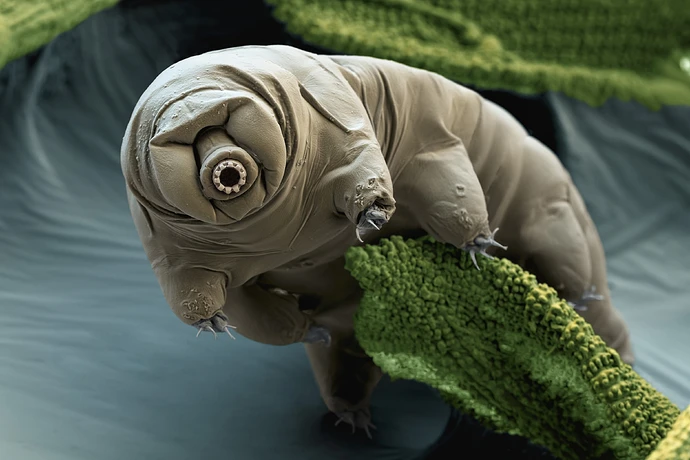I get that but surely it’s better than thick oxidisation.
As I said might be a film but less is more. ![]()
Generally correct Xanthe, however the protectorant I was refering to is a very specific for the application and is not available on open market sale (that I know of). I called it silicon because its what we called it in service, but it might well have been a synthetic. It was a semi thick grease like substance that did not become liquid in the products operating range.
From my knowledge of the physical chemistry involved, I’d be very surprised if it was anything but a silicone grease base with anti-corrosive additives (and possibly other additives as well)!
Silicone greases also have a much wider operating temperature range than organics, often -50°C to +150°C even for easily available ones, with only minor changes in physical properties (and some can be specific for operation outside of this range!), they also degrade plastics a lot less.
For a DIN connector, 2 insertion cycles will clear any amount of oxidation (usually actually sulphide) build up, even many years worth, with no other treatment necessary.
What about Caig products? Has anybody used G100L to treat contacts? The proper application is essential to avoid to spread too much liquid.
I’d rather put a clean one in.
Where does the crud go that’s scraped off. ![]()

The Preh DIN plugs Naim use, for example, have a manufacturer specification of at least 500 pulling cycles. Plenty for a single pull and re-insertion (which I believe is what Naim recommend) perhaps once or twice a year, but when people here go on about shoving them in and out dozens of times on a regular basis that seems excessive to me.
Exactly: DIN are wiping contacts, so on a regular basis (such as yearly), a single insertion cycle is all that’s ever needed.
We are presumably talking like we are in a vacuum.
Out in the field and the real world there are no doubt many other considerations.
The moisture travelling throughout the listening room will include microscopic life forms that will make some residential influence.
Along with dust shed by ourselves that are rich with Tardigrades messing about with soundstages.
![]()
Curious if those of you who do unplug and plug in your cables, if you do the same with any link plugs fitted?
The problem must be the tardigrades pushing the connectors out then!
No. They are settling in growing habitations built from their own secretions.
Beautiful photo of one of Nature’s little cuties. Gotta love em.
Must re-read whether they’re on the Moon yet, I forget…
Jeeez, just listen to the music peeps!
Saying that this thread did make me laugh ![]()
Here is the recipe by Salomon Horse, an audiophile cook:
« Get 2 containers, one for each solution. They can be paper cups, plastic, glass, bowls, whatever you can find. I have vials, because I am a professional electronics installer and I use these solutions out in the field.
Step 3: Get 1 tablespoon of raw salt, and put it in one of the containers. Fill up the rest of the container with vinegar, and stir the both together. As a general rule of thumb, put as much salt in the vinegar as will dissolve.
Step 4: Get 1 tablespoon of Sodium Bicarbonate, (baking soda) and add it to the other container. Fill up the rest with water, and stir well. Add more baking soda to make it cloudy. The amount is not important, as long as it is alkaline to cancel the acid of the vinegar solution.
Step 5: Put the stripped end of the wire in the vinegar solution, and stir the solution with the wire. any wire you want cleaned needs to be under the solution. Movement of the wire in the liquid speeds up the process.
Step 6: After 2 minutes or so, the wire will look very shiny and new in the vinegar solution. The acid and salt in the solution is etching away the oxides, exposing the bare metal. Make sure the metal is uniformly shiny. Leave it in longer if it is not perfectly clean throughout. «
Not sure it will be good to clean our expensive cables.
Using abrasive metal polish on delicate expensive audio signal connectors is the most stupid thing one can do.
Is it like this stuff? I have used it on bike lights (works well in protecting from salt road spray) and outdoor contacts, but don’t think I would try it on hi-fi equipment

In the PDS, that includes a telltale line:
Prohibits contact wear - reduces costs
So, it’s a actually an anti-corrosive contact lubricant. Contact lubricants are not recommended for low level, low frequency signals as they can cause increased contact resistance (will still be OK with RF connection though).
It’s also non-silicone, so more vulnerable to wash away under extreme conditions, and has lower compatibility with plastics (swelling, or solution of plasticising agents causing cracking).
The other problem with cleaning is the socket ends up in the same state and you cannot clean the inside on the socket. With RCA you can actually buy ultra thin Q-tips but for XLR or DIN it’s impossible so any cleaning is largely for show. Abrasion with IPA followed by eventual replacement of the socket itself is about the best you can hope for in really small hole connectors. That includs mini DIN, D connectors, HDMI.
I’ve used some speciality products in the past for cleaning oxidise from computer ports. That’s based on a sort of ultra hardened cardboard that stays hard when soaked in IPA and can be reinserted multiple times to clean a matching expansion slot. I’ve seen no such thing for DIN though. I use that for restoring classic computers and games consoles.
But eventually after half a century, you just have to replace the socket sometimes.
